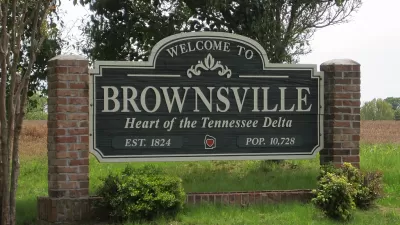Dense downtowns provide more tax revenues for cities than strip mall and big box development on a per acre basis, according to a new study.
A new study takes a holistic approach to comparing tax revenue from big box development and downtown, mixed-use development. The study, commissioned by the Sonoran Institute, finds that on a per acre basis mixed use, dense dowtown development yields higher tax revenues for communities than their suburban mall counterparts.
The study's author, Joe Minicozzi, points out that in developments such as Glenwood Meadows "that the walk across the parking lot from Chili's restaurant to Target at the Meadows is equivalent to about a two-block walk in downtown Glenwood Springs, past numerous storefronts." The loss of revenue that is incurred because of the large expanses of parking lots is significant.
Economic development is a critical topic in many communities, especially in the current economic climate, and revenue information comparing different types of development may be useful in making land use decisions. The data from the study indicates that the Meadows development in Glenwood Springs brings in approximately $141,590 per acre, while the Denver Centre development in downtown Glenwood Springs brings in approximately $264,00 per acre.
Minicozzi notes that "'New urbanist' style downtown redevelopment, with its focus on mixing high-density residential with retail and commercial office space in a pedestrian-friendly setting, also tends to yield higher property values."
"Add the cost of public services to accommodate the needs of a large mall development compared to a dense downtown area, and the cost-versus-benefit numbers are even more telling, Minicozzi said."
Thanks to Cathie Pagano
FULL STORY: Study: dense downtowns = higher tax yield

Manufactured Crisis: Losing the Nation’s Largest Source of Unsubsidized Affordable Housing
Manufactured housing communities have long been an affordable housing option for millions of people living in the U.S., but that affordability is disappearing rapidly. How did we get here?

Americans May Be Stuck — But Why?
Americans are moving a lot less than they once did, and that is a problem. While Yoni Applebaum, in his highly-publicized article Stuck, gets the reasons badly wrong, it's still important to ask: why are we moving so much less than before?

Research Shows More Roads = More Driving
A national study shows, once again, that increasing road supply induces additional vehicle travel, particularly over the long run.

Judge Halts Enforcement of Anti-Homeless Laws in Grants Pass
The Oregon city will be barred from enforcing two ordinances that prosecute unhoused residents until it increases capacity and accessibility at designated camping sites.

Advancing Sustainability in Los Angeles County Schools
The Los Angeles County Office of Education’s Green Schools Symposium brings together educators, students, and experts to advance sustainability in schools through innovative design, climate resilience strategies, and collaborative learning.

Using Old Oil and Gas Wells for Green Energy Storage
Penn State researchers have found that repurposing abandoned oil and gas wells for geothermal-assisted compressed-air energy storage can boost efficiency, reduce environmental risks, and support clean energy and job transitions.
Urban Design for Planners 1: Software Tools
This six-course series explores essential urban design concepts using open source software and equips planners with the tools they need to participate fully in the urban design process.
Planning for Universal Design
Learn the tools for implementing Universal Design in planning regulations.
City of Moreno Valley
Institute for Housing and Urban Development Studies (IHS)
City of Grandview
Harvard GSD Executive Education
NYU Wagner Graduate School of Public Service
City of Cambridge, Maryland
Newport County Development Council: Connect Greater Newport




























